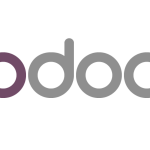FROM Gatherings AND Meetings to dates, we as a whole live in videoconferencing applications now.
Be that as it may, after a progression of protection and security messes at Zoom, which has gotten basically inseparable from video conferencing during the Coronavirus pandemic, numerous associations and people are thinking about what administration is most secure for our discussions.
Emil Ivov says you shouldn’t need to confide in anybody. Ivov is the maker of the open-source text and video visit programming Jitsi and head of video coordinated effort at 8×8, an organization that gained Jitsi in 2018.
The firm sells administrations based on Jitsi’s code, yet at the same time pays engineers to keep up the open-source variant.
Jitsi Meet is a videoconferencing application with helpful highlights like the capacity to password-protect ensure your gatherings or dismiss individuals from a gathering.
In any case, what separates it from the most notable videoconferencing administrations is that it’s free and can run totally on your own equipment.
You can download the video connect programming and use it to have video gatherings that companions and associates can join through their internet browser.
The parent organization 8×8 can’t sneak around on your discussion since it doesn’t approach your PC.
What’s more, since it’s open-source, you can examine the code to ensure there aren’t any indirect accesses. “We’d like you to believe us yet you don’t need to,” Ivov says.
That was a major piece of why the Italian organization WeSchool fused Jitsi into its online study hall programming.
Open-source arrangements can help you see what’s in the engine, which is particularly applicable when you’re managing underage students’ security,” says WeSchool Chief Marco De Rossi
Not every person needs to run their own video server or pore over source code. That is the reason individuals pay for 8×8’s Jitsi-based Video Meeting administration.
Like most videoconferencing organizations, 8×8 has seen a flood in interest since the Coronavirus pandemic.
The organization says its Jitsi-based 8×8 Video Meeting administration currently has around 13 million month-to-month dynamic clients, up from two or three hundred thousand preceding Walk.
That would put Video Meetings utilization around where examiners trust Zoom was in late February.
Testimonial of JITSI
WeSchool changed from the open-source variant of Jitsi, which WeSchool facilitated itself, to 8×8’s cloud-based Video Meeting once the Coronavirus crisis began.
An immense number of understudies began associating with the platform,” De Rossi says.
We began working with 8×8 in light of the fact that they’re acceptable at arranging huge establishments.

Running Jitsi’s product in the cloud implies you need to believe it similarly you’d trust Zoom or other videoconferencing devices like Microsoft Groups or BlueJeans, which was simply gained by Verizon.
Yet, Ivov says there are different benefits to utilizing items based on open source.
The way that anybody can change and share Jitsi’s code implies that others can incorporate the tool into their software.
WeSchool did that. So open-source chat software service Riot, which utilizes Jitsi for its video chat component. Ivov says 8×8 advantages from such tasks since they test how Jitsi’s code performs on various gadgets and in various conditions.
That helps the center Jitsi advancement group improve the product for both open-source clients and paid 8×8 clients.
Numerous clients have no issue trusting 8×8 to have their videoconferences. In any case, Ivov thinks his group has discovered a way that others can utilize 8×8’s help without confiding in the organization not to sneak around on their discussions.
One concern raised about Zoom is that the organization promoted its administration as “end-to-end encrypted,” which would mean Zoom couldn’t decode the correspondences coursing through its workers regardless of whether it needed to.
At that point, it arose that the organization approaches unscrambling keys; Zoom presently for the most part promotes its administration as utilizing “encryption” rather than “end-to-end encryption.
A-Zoom representative says the organization intends to add end-to-end encryption later on.
Barely any organizations offer genuine end-to-end encrypted videoconferencing; Apple’s FaceTime administration is one model. That is on the grounds that it’s genuinely difficult to do, as per Ivov.
Jitsi offers end-to-end encryption for balanced calls, which the product can build up straightforwardly between two gadgets.
Yet, things get more muddled for bigger discussions. Straightforwardly associating all members simultaneously would utilize too much transfer speed and preparing assets, he says.
So most videoconferencing arrangements utilize a brought together worker to route video among attendees.
At the point when you’re conversing with three others through an incorporated worker, you send only one video transfer, as opposed to three.
That implies the server needs to decode the information it gets from every individual before re-encrypting it and passing it to different clients.
That gives the worker access to the crude video content, which is the reason you need to believe whoever runs the focal worker.
The Jitsi team is chipping away at an approach to offer end-to-end encryption, even with a focal worker, on account of another element of Google Chrome called “Insertable Streams,” which makes it conceivable to add an extra layer of encryption.
Also Read:
It will not be vital for a Jitsi Meet or 8×8 Video Meeting server to decrypt the two layers of video prior to sending it to other people.
That implies that later on, you shouldn’t have to trust 8×8 with your encryption keys, since it will not need them to accomplish crafted by steering video transfers.
Also, without those keys, somebody sneaking around on the focal worker might have the option to see the scrambled video.
Hey, This is Kanika Marwaha, Software Sales & Marketing Specialist at 01 Synergy. I am a relentless problem-solver, and I’m always looking for a new challenge. I love chatting with people and learning more from them, that is how sales & marketing became my profession. I am a passionate blogger & also love to read mystery novels.





